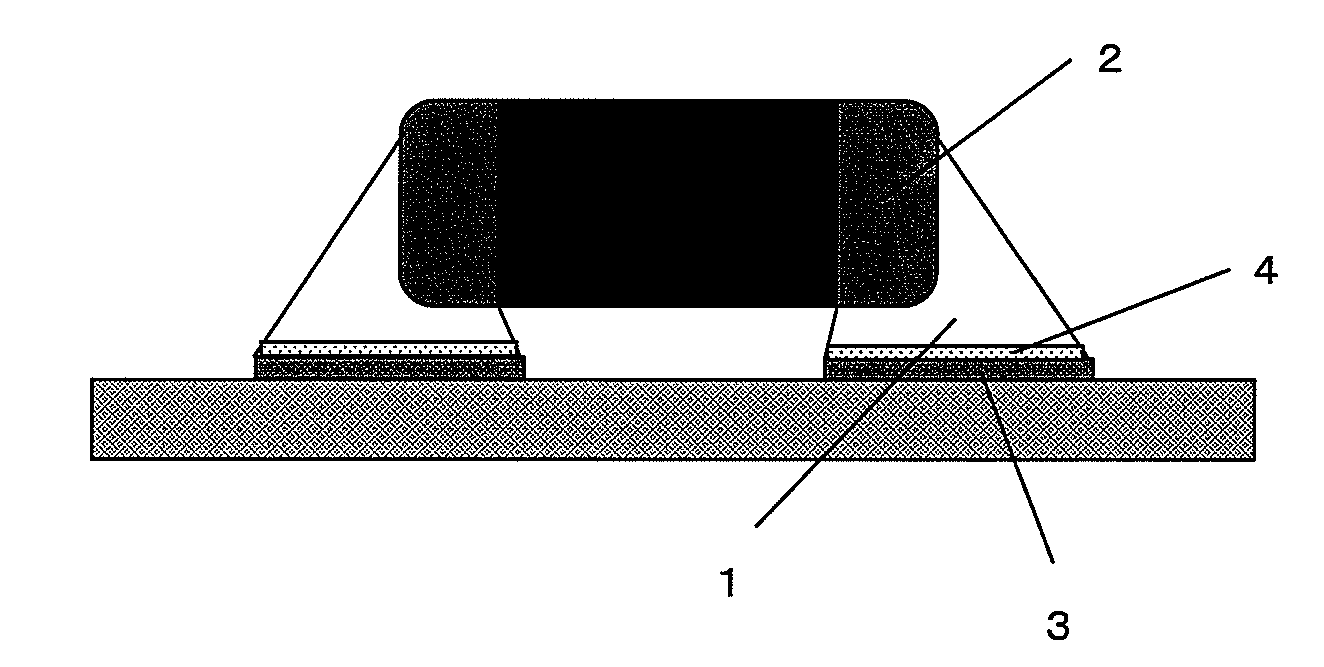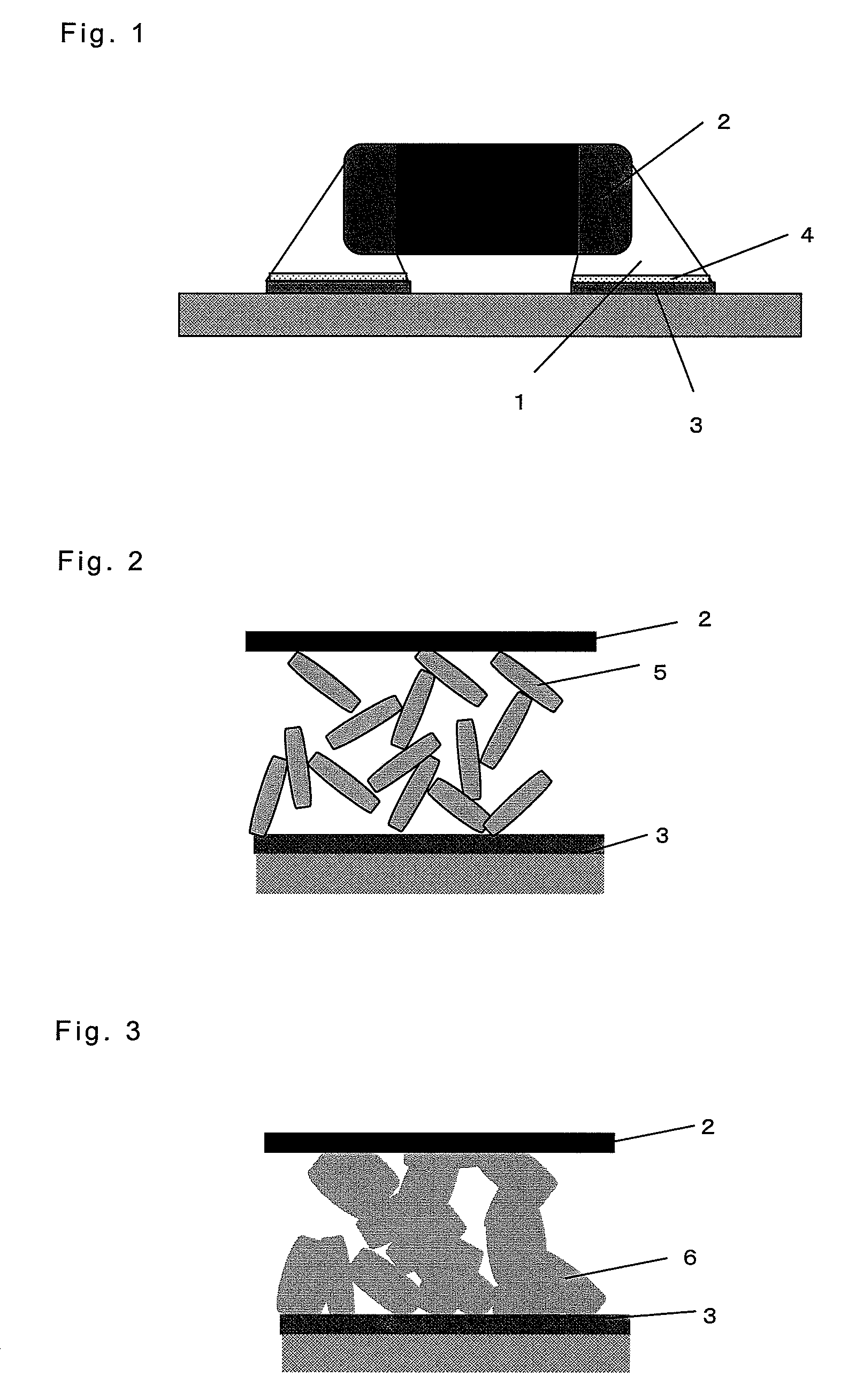Bonding material, bonded portion and circuit board
a technology of bonded portion and circuit board, which is applied in the direction of manufacturing tools, soddering apparatus, transportation and packaging, etc., can solve the problems of increasing the severity of the regulation of the treatment of industrial waste such as electronic circuit board, and damage to electronic components, and achieves high reliability, low melting point, and high tolerance to stress. high
- Summary
- Abstract
- Description
- Claims
- Application Information
AI Technical Summary
Benefits of technology
Problems solved by technology
Method used
Image
Examples
second embodiment
(Second Embodiment)
[0080]In a second embodiment of the present invention, each conductive adhesive using each solder material of Examples 1-20 and Comparative Examples 1-6 in the above first embodiment is prepared. As Comparative Example 7, a conductive adhesive containing merely Ag as its metallic component is prepared.
[0081]In each of Examples and Comparative Examples, a thermocurable epoxy resin is used as the resin component. In these Examples, any of Epicoat 828 and Epicoat 807 (manufactured by Japan Epoxy Resin (JER) Co., Ltd.) was used as a preferable Example of the epoxy resin and 2PHZ (manufactured by SHIKOKU CHEMICALS CORPORATION) was used as a hardening agent. In the solder material, commercially available metallic micro fine powder having flake form or powder form may be used. In each Example, the solder paste prepared in the first embodiment was used.
[0082]A conductive adhesive was prepared by adding 15% by weight of the above resin component to 85% by weight of solder ...
third embodiment
(Third Embodiment)
[0087]In a third embodiment of the present invention, a second resin component having reducing property as shown in Examples 21-25 in Table 3 was added to each of the solder paste prepared in Example 1. The weight ratio of the resin component to the solder material was 15:85 and the weight ratio of the first resin component to the second resin component was 80:20.
[0088]It was found that each alloy filler containing Sn and using any of adipic acid, abietic acid, ascorbic acid, acrylic acid, citric acid and polyacrylic acid as the second resin component showed improved fusibility and decreased volume resistivity. When each filler being after cured was observed, it was confirmed that Sn containing fillers were sufficiently fused (or molten), thereby metallic bond and the like was formed.
[0089]
TABLE 3volume resistivityreducing agent(micro ohm cm)Example 21adipic acid16.5Example 22abietic acid16.4Example 23ascorbic acid16.4Example 24citric acid16.3Example 25polyacrylic1...
PUM
| Property | Measurement | Unit |
|---|---|---|
| melting point | aaaaa | aaaaa |
| melting point | aaaaa | aaaaa |
| elongation | aaaaa | aaaaa |
Abstract
Description
Claims
Application Information
 Login to View More
Login to View More - R&D
- Intellectual Property
- Life Sciences
- Materials
- Tech Scout
- Unparalleled Data Quality
- Higher Quality Content
- 60% Fewer Hallucinations
Browse by: Latest US Patents, China's latest patents, Technical Efficacy Thesaurus, Application Domain, Technology Topic, Popular Technical Reports.
© 2025 PatSnap. All rights reserved.Legal|Privacy policy|Modern Slavery Act Transparency Statement|Sitemap|About US| Contact US: help@patsnap.com



